Text
End of Term Instructions:

1. When to Turn In Materials
All materials are due at or by the Final Examination Meeting. This meeting will occur at 8:15 on Tuesday, 18 May
This meeting will take place in person and via Zoom.
2. What to Turn In
Materials to turn in: your notebook, any other work you wish to include, and the self-evaluation.
(a) Digital submission:
If your work is digital, or you are submitting your work digitally, you must email it to me in a form I can easily open. Please send all digital work attached to the same email to me.
(b) Analog submission:
If your work is analog, you must turn it in to me in person. I can’t guarantee that I will receive your work if you leave it for me somewhere.
If your work is analog and you wish me to return it, please indicate whether you want to (a) pick it up from the hallway outside my office door (208 Watts); or (b) have it returned by mail (please include prepaid and addressed mailing envelope).
3. The Self Evaluation
The Self-Evaluation is a required assignment. Please complete all the following steps.
preliminary: review the course Learning Goals and consider your performance in each area (the 6-point rubric below will be useful at judging your performance); also consider your attendance and engagement in the course (there is a separate rubric below for this).
part 1: write a list of the 3-5 most important things you learned from the course, including a brief explanation
part 2: write an overall evaluation of your performance in the course as a rationale for the grade you believe you have earned. (The grade should be a letter grade and can include the +/- modifier.)
Note: the self-evaluation should be turned in with or as a part of your notebook. For example, if you have an analog notebook you can simply handwrite it in the notebook.
4. Course Learning Goals for FA 111
students in this course will get better at:
recognizing, describing, and understanding art works from various periods in Western history in terms of their culture, type, materials, techniques, and cultural purpose
discussing artworks in terms of broad themes about the purpose and function of art in human societies, and how cultural values are reflected and expressed through aesthetic principles
understanding why and how an awareness of Western art and aesthetic principles have shaped and been shaped by our history
communicating the above in clear, concise, correct, and courteous language, both spoken and written
Note: you can also include the meta-topics of Method and Mindset.
5. Rubrics
(a) Basic 6-point Rubric for Performance Evaluation at Assigned Work
6 (Excellent) The work accomplishes the objectives of the assignment and either attempts or succeeds in surpassing these objectives.
5 (Strong) The work effectively accomplishes the goals of the assignment. It is clear, detailed, accurate, well-organized, and appropriate in every regard.
4. (Competent) The work accomplishes the goals of the assignment, but is could be improved in scope, clarity, detail, organization, or accuracy.
3. (Acceptable) The work accomplishes the goals of the assignment, but is not fully effective. The scope, clarity, detail, organization, and accuracy of the work are acceptable overall, but aspects of the work are incomplete or lack substance.
2. (Flawed) The work minimally accomplishes the goals of the assignment. There are problems with scope, clarity, detail, organization, and accuracy that leave it incomplete or unfinished.
1. (Unacceptable) The work has attempted the assignment but has not effectively accomplished the goals of the assignment.
0. (Not Turned in; Plagiarized)
(b) Rubrics for Engagement Evaluation
1. Attendance: In Class, Prepared to Work; Caught up with Missed Classes
6 Nearly Every Class
5 Most Every Class
4 Most Classes
3 Some Classes (more than half)
2 Some Classes (less than half)
1 Few Classes
0 Very Few Classes
(+/- Prepared Material (Read, Studied) Before &/or After Classes)
2. Participation: Asked & Answered Questions; and/or made clear non-verbal signals; Sought and Used Feedback from Instructor
6 Every Class (even if not present)
5 Almost Every Class
4 Sometimes
3 Sometimes, but mostly about my own work
2 Rarely, only about my own work
1 Rarely
0 Never
(+/- Joined Discussion, Connected to Other Students; and Helped Other Students)
0 notes
Text
For Thursday, 29 April
Medieval Art: Unicorns (Last New Material)
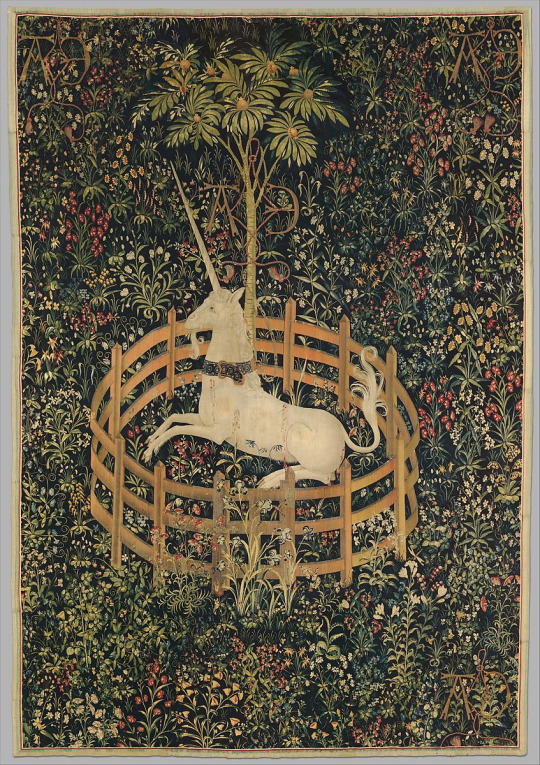
above: The Unicorn Rests in a Garden (French/Dutch) c. 1500
below: The Unicorn Purifies Water (+
also:
The Hunt of the Unicorn (wikipedia)
How Medieval & Renaissance Tapestries were Made
The Unicorn Purifies Water: Insider Insights [v]
Aquamanile in the form of a Unicorn
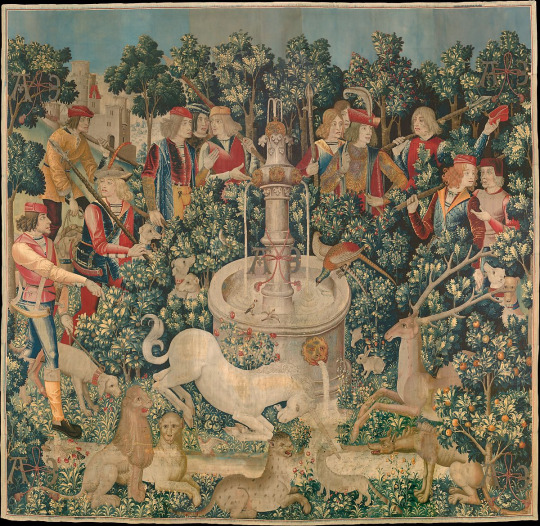
0 notes
Text
For Tuesday, 27 April
Medieval Art: Lions
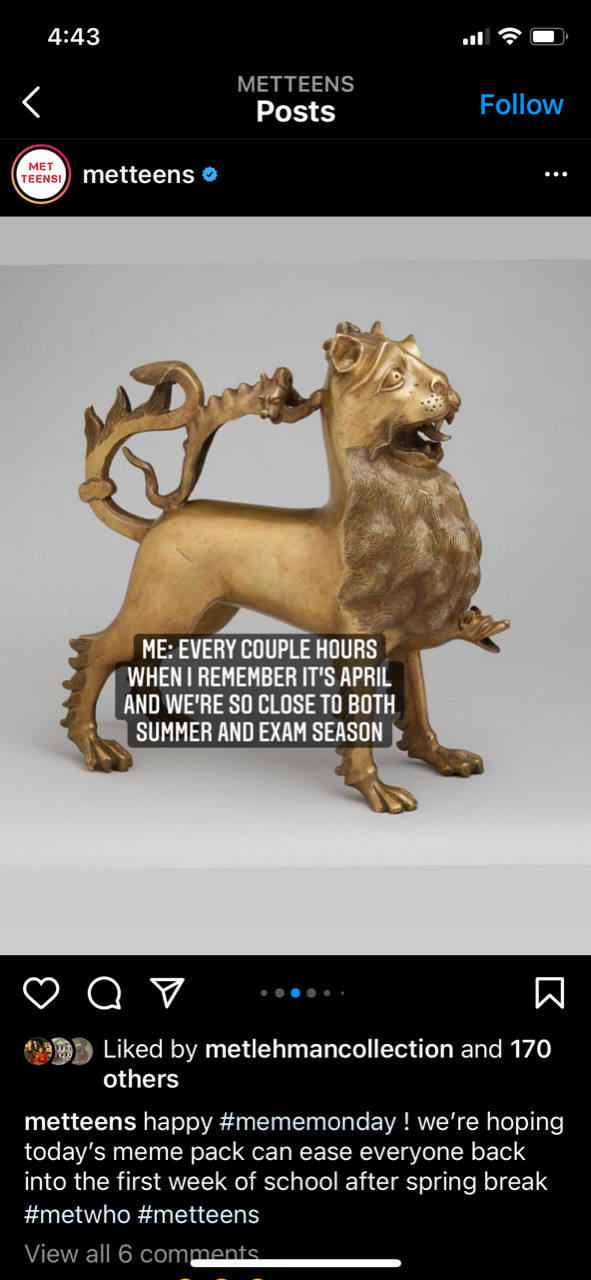
Aquamanile in the Form of a Lion. North German, ca. 1400
More Examples:
Aquamanile in the Form of a Lion Biting a Dragon. North German, ca. 1400.
Another Lion Aquamanile - and another - and another - and yet another - and ok, here's another
Voussoir (stone from an arch) France, 12-13th century
Pair of Lions from a Spanish Doorway
Lion from a 12th century Bestiary (British Museum)
Two Lions (Medieval Manuscript)
A thread of medieval lions who would rather not (Erik Wade)
which embroidered lion are you today?
Stuff to Read:
Why Are Medieval Lions So Bad?
Interpreting the Beasts of the Middle Ages
0 notes
Text
For Thursday, 19 April
UNIT 4: MEDIEVAL ART: DRAGONS

above: Aquamanile in the Form of a Dragon. North German, ca. 1200
More:
Aquamanile in the Form of a Crowned Centaur Fighting a Dragon. German, 1200–1225
again, the Knight Chess Piece. British, ca. 1250.
Dragon. Spanish fresco, After 1200.
Medallion from a Coffret. French, ca. 1210
Leaf from choir-book with initial S in red pen-work on green and blue ground depicting a dragon. Netherland. late 12th century (Victoria & Albert Museum)
also
Animals in Medieval Art
Dragons: What Are They?
2 notes
·
View notes
Text



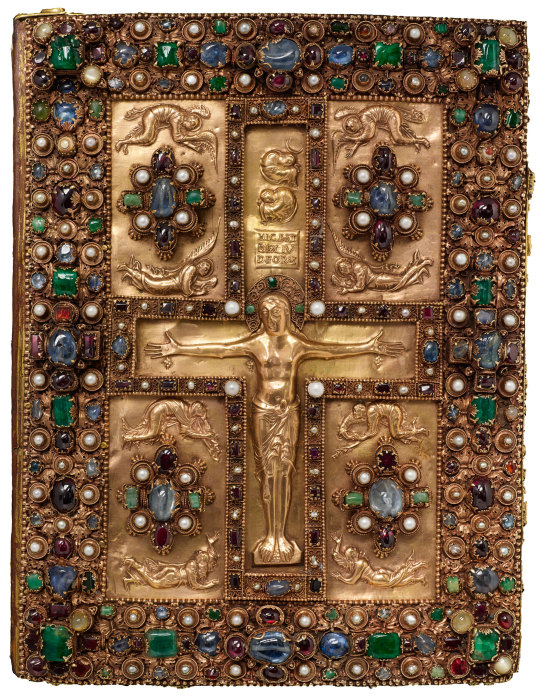
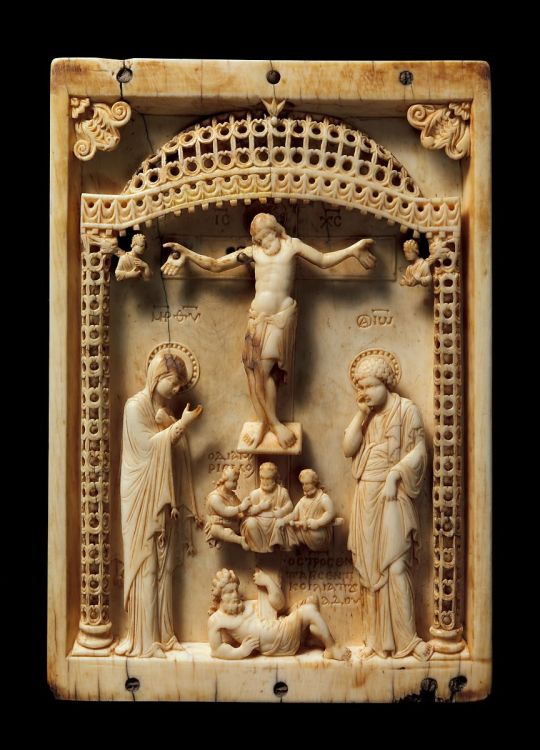
Manuscript Leaf with the Crucifixion, from a Missal, ca. 1270–80
Manuscript Illumination with Crucifixion in an Initial T, from a Missal
Manuscript Leaf with the Crucifixion in an Initial D, from a Book of Hours
Cover of the Lindau Gospels (Morgan Library)
0 notes
Text
For Tuesday, 13 April
UNIT 4: MEDIEVAL ART

above: Manuscript Leaf with Initial M, from a Missal, ca. 1290
below: Manuscript Leaf with Opening of The Book of Nehemias, from a Bible, ca. 1280–1300
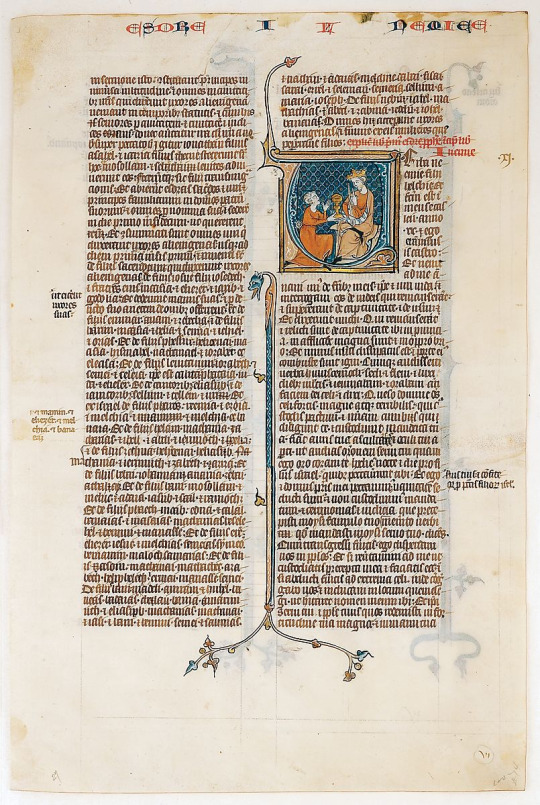
Manuscript Illustration: more examples
Manuscript Leaf with the Crucifixion, from a Missal, ca. 1270–80) (Initial+Crucifixion)
Manuscript Leaf with the Crucifixion in an Initial D, from a Book of Hour, sca. 1350
Further Information:
The Art of the Book in the Middle Ages
Monasticism in Western Medieval Europe
0 notes
Text
For Tuesday 13 April

above: Manuscript Illumination with Initial V, from a Bible
below: French "University" Bible, mid-13th century
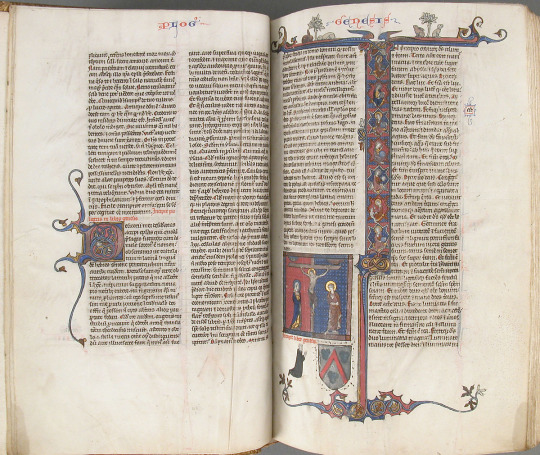
below: 13th century Psalter

below: Manuscript Leaf from a Royal Psalter
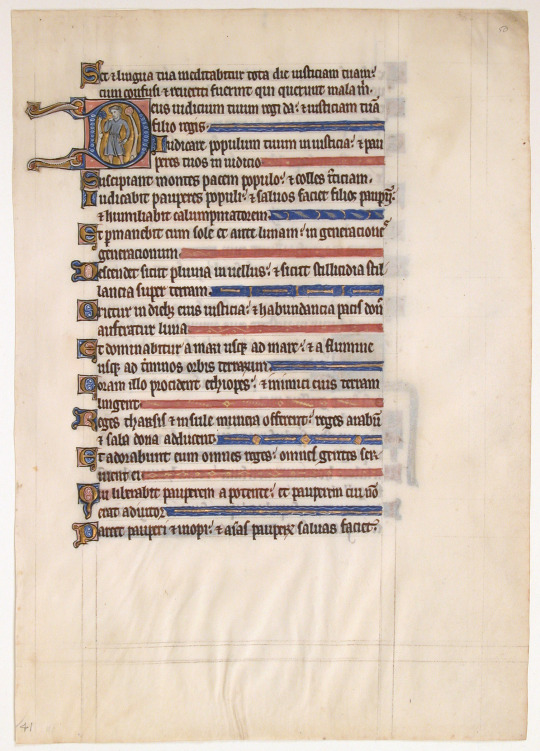
Making Manuscripts (Getty Museum) [v]
The Alchemy of Color and Chemical Change in Medieval Manuscripts (Getty Museum) [v]
0 notes
Text
For Thursday, April 8
UNIT 3: MEDIEVAL ART: Viking & Anglo Saxon Art

above: Anglo-Saxon Disk Brooch
see also:
Round Box Brooch
the Crundale Buckle (British Museum)
Buckles from Kings Field (British Museum)
Shield Mount from Sutton Hoo (British Museum)
Sutton Hoo Treasure (British Museum)
Spanish Pyxis (box)
VIKING TREASURE!

The Cuerdale Hoard
More on the Hoard (BBC)
All 2098 objects!
0 notes
Text
The Medieval Period: a bit of Introduction

above: A Knight of the d'Aluye Family
below: Knight Chess Piece


above: the Hebrew prophet Abiud
below: Calendar Page for the Month of July

and below: Mirror Case with a Scene of Falconing
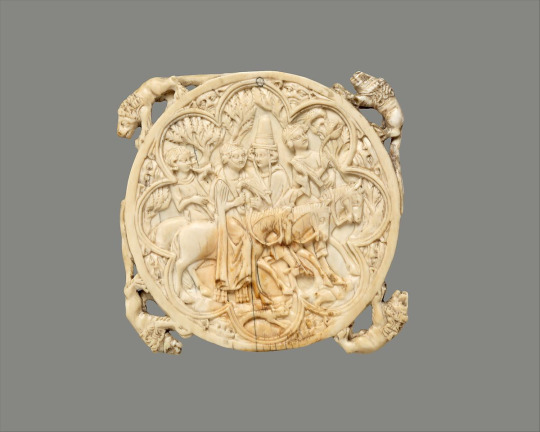
0 notes
Text
Review: What We’ve Looked & Learned About at So Far

INTRODUCTION
Cycladic Idol
ANCIENT GREECE
Funeral Statues
the Anavysos Kouros (also known as the Kritios Kouros)
the Phrasikleia Kore
Marble funerary statues of a maiden and a little girl. ca. 320 B.C.
Marble grave stele of a young woman and servant.
Vase Painting
Terracotta Panathenaic prize amphora
Terracotta bell-krater
ROMAN & BYZANTINE
Wall Painting / Mosaic
Wall painting from Room H of the Villa of P. Fannius Synistor at Boscorealeca
Cubiculum (bedroom) from the Villa of P. Fannius Synistor at Boscorealeca
Fragment of a Floor Mosaic with a Personification of Ktisis
Portrait Sculpture
Marble bust of a man
Marble portrait of the emperor Augustus
Christian Icons
Icon with the Crucifixion (Ivory)
Enthroned Madonna and Child (Tempera Paint on Wood)
KEY THEMES & THINGS TO ALWAYS NOTICE (Key Questions)
notice your reactions & associations, but don’t stop there
shape & arrangement of features
materials and methods
iconography (use of visual symbols)
social context: who makes, owns, uses, pays for the art
liveliness
idealism
contraposto (weight-shift) stance
illusionism
abstraction
the human figure as an intersection between social and spiritual worlds
seeing is never enough; slow looking is how you pay attention
TOPICS for the remaining 5 weeks
Anglo-Saxon / Viking Art (Disc Brooch)
Manuscript Illustration (Initials) (Crucifixion) (Initial+Crucifixion)
Enthroned Virgin and Child from the 1200s (French) (Spanish)
Medieval Animals (Unicorn Tapestry) (Dragon Flagon)
Stained Glass (Christ Presenting the Keys to Saint Peter)
0 notes
Text
For Tuesday, 30 March

above: Enthroned Madonna and Child, c. 1250/1275.
below: Madonna and Child on a Curved Throne, c. 1260/1280
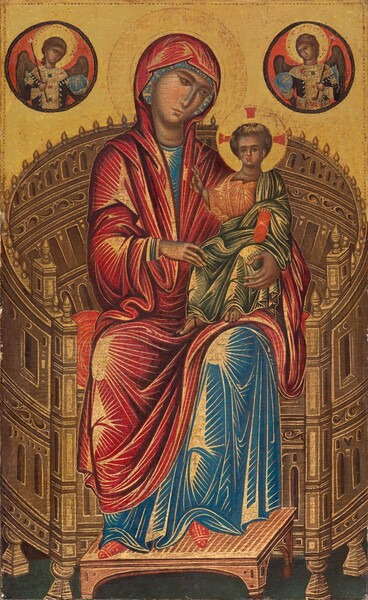
0 notes
Text
For Thursday, 25 March
UNIT 3: BYZANTINE & EARLY MEDIEVAL ART
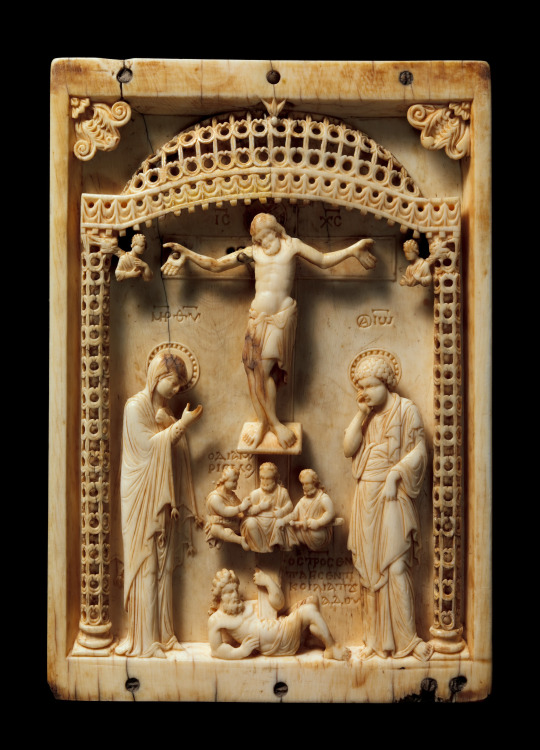
above: Icon with the Crucifixion. Byzantine, mid-10th century.
below (1): Icon with the Koimesis, 900s.
below (2) : Pyx with the Women at Christ's Tomb. Byzantine, 500s
ASSIGNMENT: If you didn’t read the essay on Byzantine Art from Tuesday, please do that -- and also the essay below.
Byzantine Ivories

ADDITIONAL READING:
The Cult of the Virgin Mary in the Middle Ages
Private Devotion in Medieval Christianity

0 notes
Text
For Tuesday, 21 March
UNIT 3: BYZANTINE & EARLY MEDIEVAL ART: 1.

Fragment of a Floor Mosaic with a Personification of Ktisis, 500–550, with modern restoration
ASSIGNMENT: Please Read these Articles from the MET:
Byzantium (ca. 330–1453)
The Byzantine State under Justinian I (Justinian the Great)
0 notes
Text
For Thursday, 18 March
UNIT 2: ROMAN ART: 2 Roman Portrait Sculpture: the Emperor Augustus

Marble portrait of the emperor Augustus, ca. A.D. 14–37
READINGS & Further Examples:
Augustan Rule (27 B.C.–14 A.D.)
Roman Portrait Sculpture: The Stylistic Cycle
Augustus from Prima Porta (Vatican Museum)
See below for more images & examples from the MET

above: Marble portrait of the emperor Augustus ca. A.D. 14–37
below: Colossal marble head of the emperor Augustus ca. A.D. 14–30
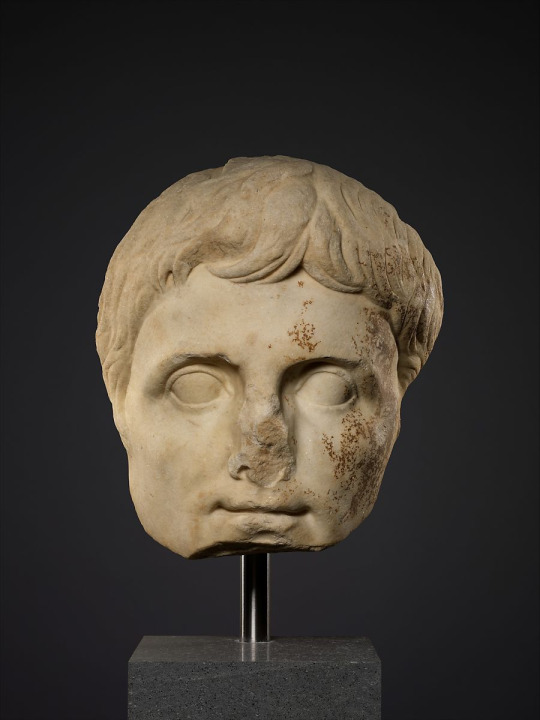
More:
Sardonyx cameo portrait of the Emperor Augustus ca. A.D. 41–54
Gold ring with cameo glass portrait of the Emperor Augustus, 1st half of 1st century A.D.
Glass cameo: head of Augustus, early 1st century A.D.
Ivory portrait head of the emperor Augustus ca. 27 B.C.–A.D. 14
0 notes
Text
For Tuesday, 16 March
UNIT 2: ANCIENT ROMAN ART: 2. Roman Portrait Sculpture

Marble bust of a man, mid-1st century A.D.
ASSIGNMENT: after sketching, compare this work to Greek funerary statues. List a few ways in which it differs -- excluding the fact that this is a portrait head instead of a full body representation.
MORE EXAMPLES: Can you figure out a characteristically Roman approach to portraits like these? Which one is your favorite, and why?
Marble bust of a bearded man, ca. A.D. 150–175
Marble head of an elderly woman, ca. 40–20 B.C.
“In antiquity, all marble sculpture was painted. Here, the indication of eyelashes can still be seen on the upper lid of the right eye, and traces of pigment remain on the same eye and on the hair. “
Marble bust of a woman. mid–3rd century A.D.
Marble portrait bust of a woman ca. A.D. 155–165
0 notes
Text
Sorry, not mosaics yet; on to Roman Statues.
Otherwise we’re going to fall behind. I’m terrible for always wanting to chase the shinies.
0 notes
